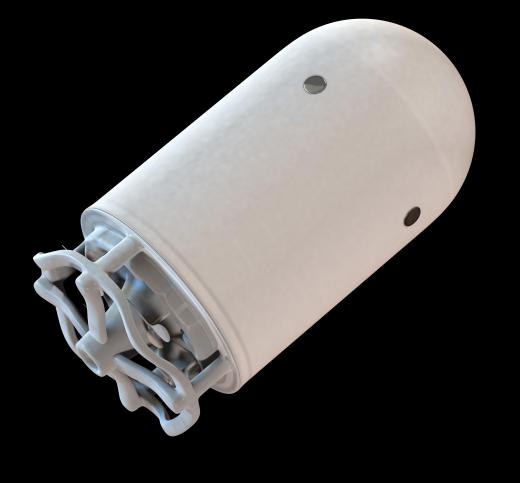What are Some Examples of Nanoscale Devices?
 Michael Anissimov
Michael Anissimov
Nanotechnology is an new field which is virtually exploding. The nanotechnology market was $10.5 billion US Dollars (USD) in 2006, with studies expecting the field to expand to $115 billion USD by 2012. Nanotechnology has become so popular that many scientists and journalists have started referring to anything on the nanoscale as "nanotechnology", such as current computer chips. This is despite the fact that this contradicts the original definition of nanotechnology, which was pertaining to active nanoscale devices engaging in molecular fabrication. We do not have these nanoscale fabricators (sometimes called "assemblers") yet, but many important proof-of-concept active nanoscale devices are being created with some regularity.
A library of nanoscale devices is quickly growing. Rotaxanes are circular molecules that have been used as molecular switches. Graphenes have been used to create transistors only a single atom thick and 50 atoms long. Researchers at Lawrence Berkeley Livermore Labs have made significant progress on nanoscale devices throughout the early 00s, including a nanotube-based electrostatic nanomotor, a molecular actuator, and a nanoelectromechanical relaxation oscillator. The nanomotor is about 500 nm across, or 300 times smaller than a human hair, and is the smallest motor ever built.

A distinction must be made between nanoscale devices, which actually do things and have significance on their own, and nanostructured materials, which are mostly passive objects that must be aggregated in large quantities to do anything interesting. Nanostructured materials are more primitive by comparison, though still the state of the art of modern technology. The creation of nanoscale devices is part of the push towards molecular nanotechnology, or molecular fabrication, where human-scale products would be created through a bottom-up process, placing each atom individually in a predetermined place.
Further nanoscale devices include a nanotube-threaded lipid membrane, which can move tiny amounts of fluid, even single molecules; the Rice University nanocar, which uses buckytubes for wheels, "walking DNA", DNA molecules that lift and touch down with molecular "legs" just like a walking human being; semiconducting polymer nanostructures with numerous applications including illumination and optical wires, and dozens more beyond the scope of this article. Nanoscale devices are definitely an area to watch in the coming years.
AS FEATURED ON:
AS FEATURED ON:











Discuss this Article
Post your comments